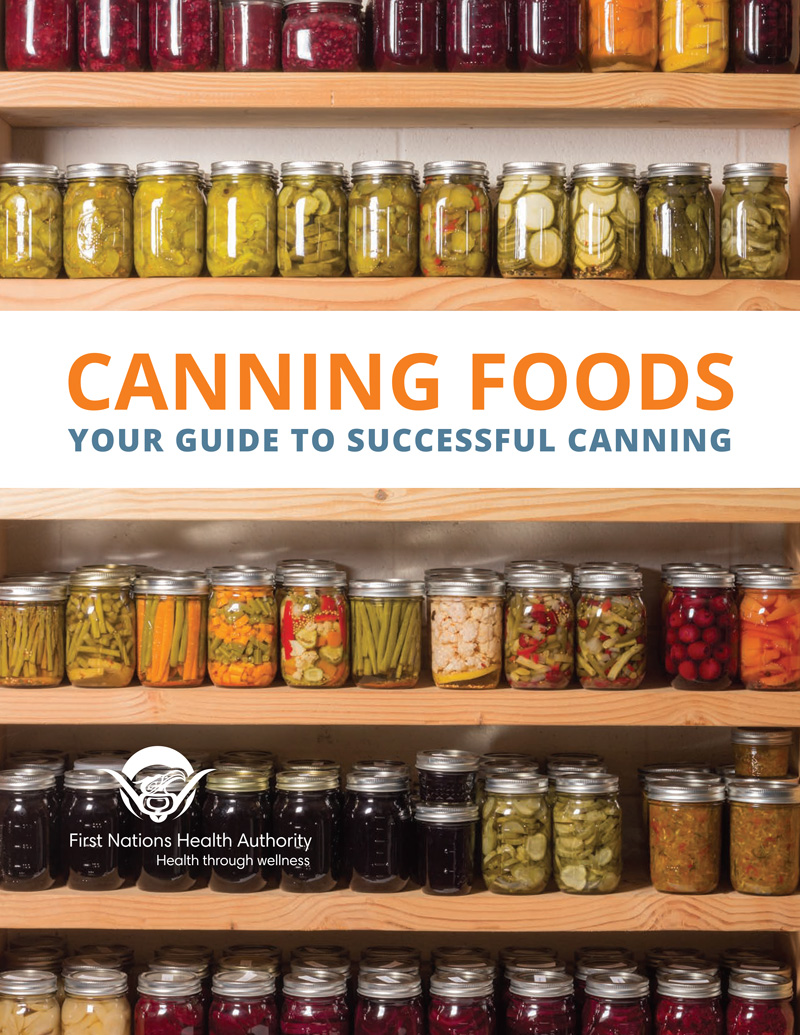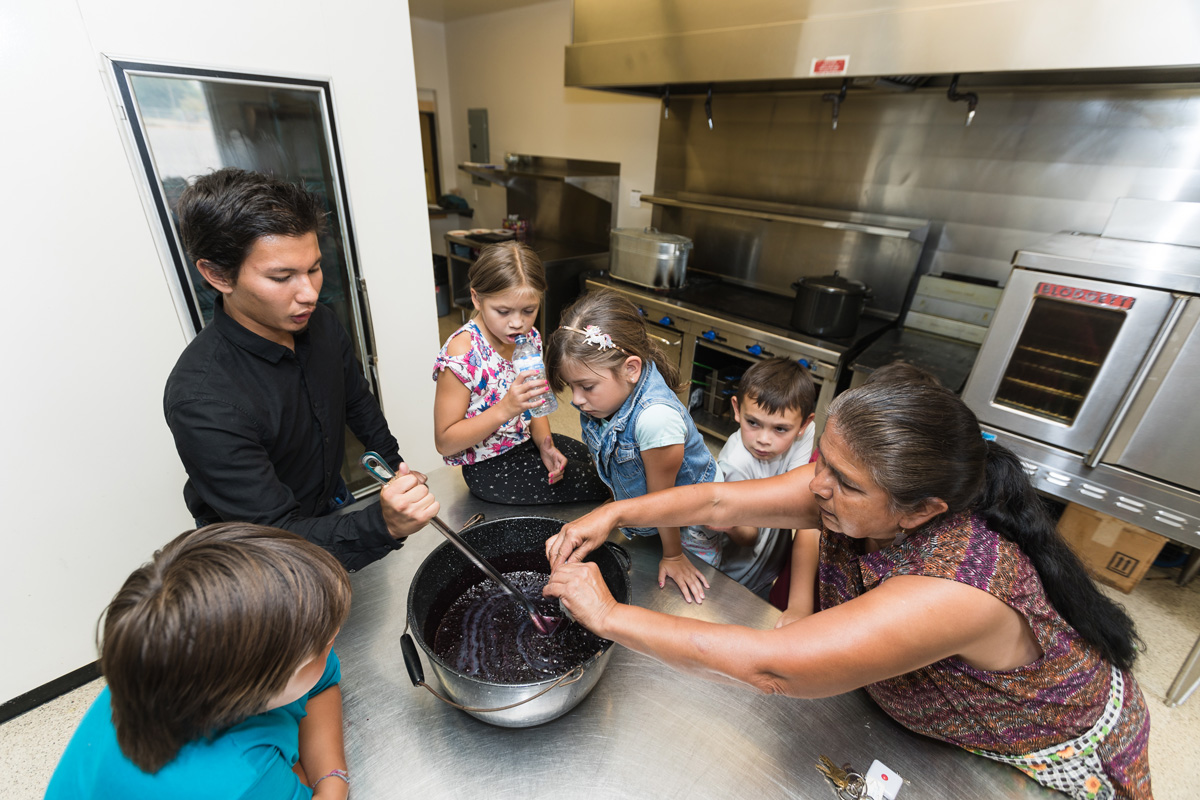
What is a time-honoured tradition in many First Nations families, a way to enjoy time with family members and friends, and a cost-effective method to store foods? If you answered "canning," you are absolutely right!

Above: Canning Champion Roberta Latimer (right) with youth and Elders who participated in a canning workshop Roberta led at the Wei Wai Kum First Nation in Campbell River last summer. “Canning is something I want to pass on to my children, my grandchildren – and they’re all learning that now,” she says.
Canning is one of the ways Indigenous people preserve foods such as berries, vegetables, fish and meat. Now the First Nations Health Authority (FNHA) is helping to promote this efficient and inexpensive process with the publication of a guide called Canning Foods – Your Guide to Successful Canning.
For the FNHA's Chief Medical Officer, Dr. Evan Adams, the canning guide supports an Indigenous tradition that helps families eat together, stay together and stay healthy together. "Canning food helps promote good nutrition," he said. "When the activity is done with others, it adds love along with the other ingredients – and that promotes quality of life as well as food quality!"
The guide provides detailed instructions on how to can food by heating it in glass jars. It describes best practices for safe canning techniques and offers tested recipes for a wide range of foods - everything from clams to carrots, from applesauce to oysters, from rabbit to rhubarb-strawberry jelly!
Some of the recipes come from "Canning Champions." These are representatives from First Nations communities around the province who participated in and helped shape a new train-the-trainer course developed by the FNHA's Environmental Public Health Services and Community Health and Wellness departments.
"Our priority is ensuring that First Nations communities have safe access to traditional foods and that both food security and food safety are top considerations for community wellness," said Linda Pillsworth, FNHA Manager of Environmental Public Health Services. Her team, along with members of Community Health and Wellness, developed the guide in close consultation with the Canning Champions to ensure it was a useful tool for them – one that's reflective of their own experiences.
The guide also features photos of the Champions, including those taken at a canning workshop for youth and Elders led by Roberta Latimer of the Wei Wai Kum First Nation in Campbell River. The photos are a reminder of the social interaction offered by community canning activities – and the role of this activity in the lives of multiple generations.
"My mother was my inspiration for food preservation," said Canning Champion Pat Raphael Derickson of Tsinstikeptum - Westbank First Nation. "As we canned, she would share the importance of planning ahead – and jokes and laughter rang through the kitchen. I miss her but I share this knowledge with my children and grandbabies."
Pat also recalls her family sharing their canned food with others who were less fortunate – highlighting another advantage to this activity in that it makes it easier to share nutritious seasonal and traditional foods year-round with others.
Environmental Health Officers and Canning Champions are distributing the guide at canning workshops, FOODSAFE courses, hunting and fishing camps, and other community events where food is a focus. The guide is also available by contacting local Environmental Health Officers directly and a PDF version is posted on the FNHA website.
"This is a first step along a path of improving not just food safety and food security but also access to traditional foods," said Linda. "We plan to build on this guide by gathering more recipes from communities across the province and by offering information on other forms of traditional food preservation, such as drying, smoking and salt-curing. FNHA and our health partners have also initiated discussions on how to enhance access to traditional foods in care facilities. We look forward to engaging with communities further on these activities."
Download the guide here in PDF format (PDF 7.88 MB)
